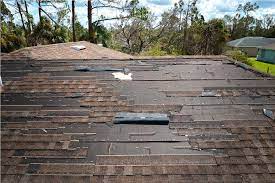Your roof is one of the most important parts of your home it protects your family, belongings, and structure from the elements. But like any part of a house, it doesn’t last forever. The earlier you catch roof problems, the easier (and cheaper) they are to fix. Ignoring small issues can lead to costly repairs or even a full replacement.
Here are some of the early warning signs of roof damage every homeowner should watch for:
Missing or Damaged Shingles
If you notice shingles that are cracked, curled, or completely missing, your roof’s protective layer is compromised. This makes it easier for water to seep in and cause leaks.
Tip: After a storm or strong wind, do a quick ground-level check for shingle damage, or look for pieces of shingles around your yard.
Water Stains on Ceilings or Walls
Brown or yellowish water stains indoors often point to a roof leak. Even if the stain looks small, the damage above could be much worse.
Tip: Pay close attention to stains near chimneys, skylights, or vents, since these areas are more vulnerable to leaks.
Granules in the Gutters
If you spot small granules (like coarse black sand) in your gutters, it’s a sign that asphalt shingles are wearing down. This usually means your roof is aging and losing its ability to protect your home.
Tip: Check your downspouts after heavy rain—excessive granules washing out is a clear red flag.
Sagging Roofline
A roof that looks uneven or saggy may have structural damage, water buildup, or weakened decking. This is a serious issue that requires immediate inspection.
Tip: View your roof from the street or yard—any noticeable dip or curve should not be ignored.
Moss, Algae, or Mold Growth
Green patches may look harmless, but moss and algae trap moisture, which can weaken shingles and shorten your roof’s lifespan. Mold is even more concerning, as it can spread into your attic and cause health issues.
Tip: Prevent growth by keeping trees trimmed back and ensuring proper roof ventilation.
Rising Energy Bills
If your heating or cooling costs suddenly spike, poor roof ventilation or hidden leaks might be the reason. A damaged roof allows air to escape, forcing your HVAC system to work harder.
Tip: Compare your energy bills from the same month last year—if costs have jumped without a clear reason, your roof could be part of the problem.
Light Coming Through the Attic
If you head up to your attic and see daylight shining through cracks or gaps, that means water (and pests) can get in too. This usually indicates worn-out roofing material or poor sealing.
Rusted Flashing or Damaged Sealant
Flashing is the thin metal material installed around chimneys, vents, and skylights to keep water out. If it’s rusted, bent, or missing, leaks are almost guaranteed.
Why Early Detection Matters
Roof repairs may feel like an unwanted expense, but catching problems early can save thousands of dollars in the long run. A small leak can quickly lead to:
-
Mold growth inside walls and ceilings
-
Structural wood rot
-
Damaged insulation
-
Electrical hazards
Final Thoughts
Catching these signs early can save you from costly repairs and keep your home safe and secure. If you notice any of the above, don’t wait—schedule a professional roof inspection. Roofing experts can identify hidden problems and suggest whether a minor repair or full replacement is the best option.


